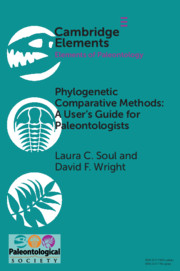Element contents
Phylogenetic Comparative Methods: A User's Guide for Paleontologists
Published online by Cambridge University Press: 21 April 2021
Summary
- Type
- Element
- Information
- Series: Elements of PaleontologyOnline ISBN: 9781108894142Publisher: Cambridge University PressPrint publication: 27 May 2021

